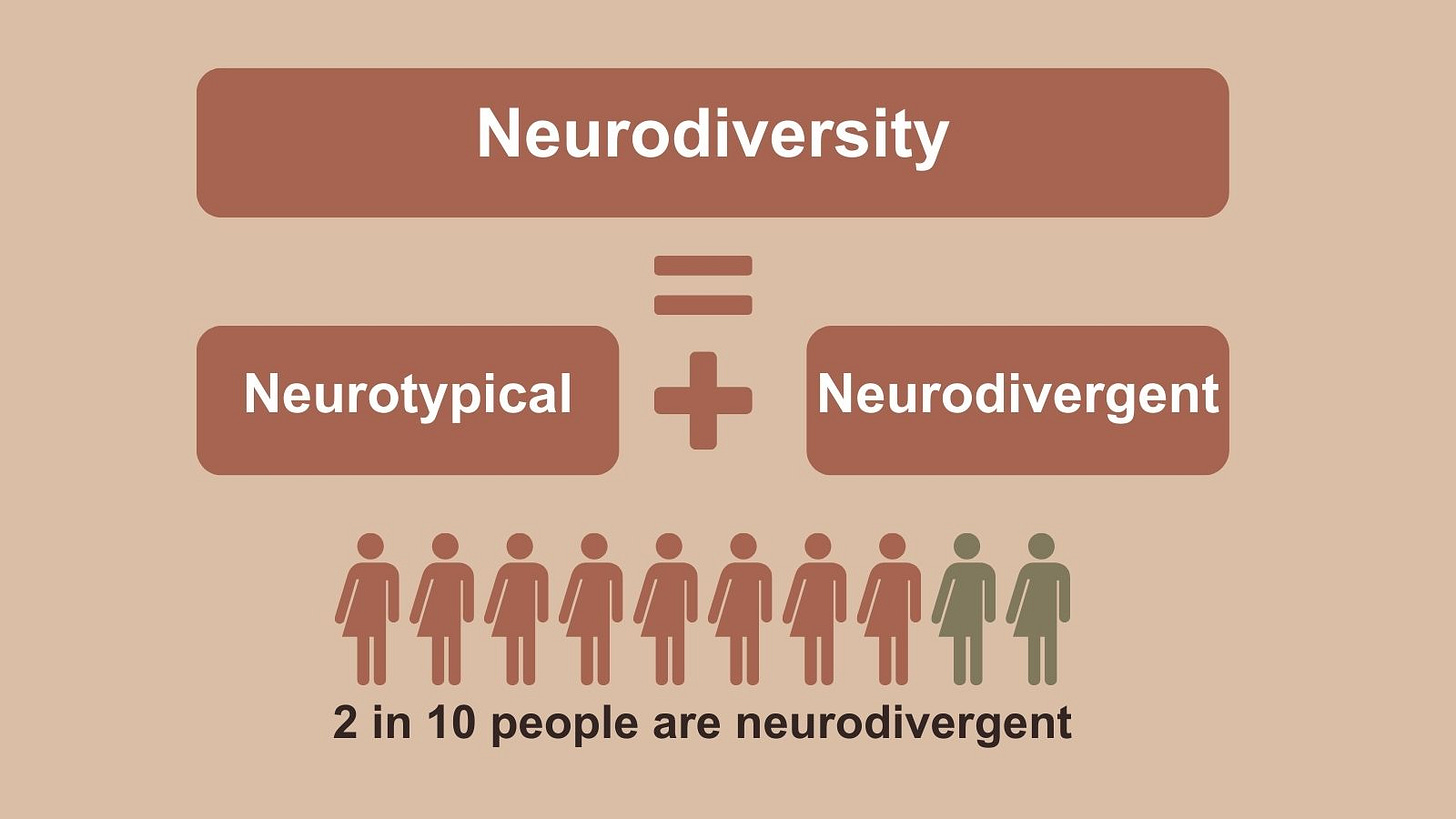Introducing How to create a neuroinclusive workplace
How to create a neuroinclusive workplace guide for teams and managers
It is estimated that 20% of the population is neurodivergent so that’s potentially 20% of your workforce. Yet neurodiversity in the workplace is still widely overlooked. To address this, it's important for teams and managers to understand neurodiversity - the natural diversity of human minds - and implement strategies for creating neuroinclusive workplaces.
"If your workplace is designed for neurotypical people, you are unintentionally excluding neurodivergent talent."
Understanding neurodiversity and integrating neuroinclusive practices into our communication strategies is essential for building innovative, creative and inclusive workplaces. To facilitate this understanding, let's explain some key neurodiversity terms:
Neurodiversity: This term describes the natural variation in human minds, acknowledging that diversity extends beyond ethnicity, gender, and sexuality to encompass cognitive styles and functioning.
Neurotypical: Refers to individuals whose minds align with societal standards of “typicality” or “normalcy”.
Neurodivergent: Umbrella term for individuals whose cognitive styles deviate from the norm, encompassing a wide spectrum of differences.
Neurodiverse: Describes a group comprising both neurotypical and neurodivergent individuals, recognizing the richness of cognitive diversity.
Now, let's explore the benefits and strategies for creating a neuroinclusive workplace:
Benefits of neuroinclusive workplaces:
Enhanced innovation and creativity: Neurodiverse teams bring a variety of perspectives, leading to innovative solutions and creative approaches.
Better problem-solving and decision-making: Diverse cognitive styles enable workplaces to address complex challenges more effectively.
Improved employee engagement and retention: When employees feel accepted and valued for their differences, they are more engaged, motivated, and satisfied with their work.
Neuroinclusive workplace culture:
In a neuroinclusive workplace, culture plays a pivotal role in fostering an environment where neurodivergent colleagues can thrive. Psychological safety – characterised by trust and respect – is paramount. When employees feel valued for their unique strengths, engagement and retention rates soar.
Neuroinclusive workplace communications:
Effective communication is essential in a neuroinclusive workplace. Messages should be clear, concise, and consistent to accommodate diverse cognitive styles. Involving neurodivergent colleagues in decision-making processes ensures wider engagement and avoids a one-size-fits-all approach.
Neuroinclusive workplace collaboration:
Understanding how neurodivergent colleagues collaborate is key. Flexible collaboration methods, such as asynchronous communication and virtual meetings, accommodate diverse preferences and working styles. Team agreements empower individuals to collaborate effectively, fostering trust and mutual understanding.
Neuroinclusive workplace design:
Workplace design should prioritise the needs of neurodivergent colleagues. Providing control over sensory environments, work locations, and communication methods fosters inclusivity and autonomy. Flexible onboarding processes and remote work options promote accessibility and accommodate diverse needs.
Neuroinclusive recruitment:
Traditional recruitment processes often overlook neurodiverse talent. Clear, concise, and consistent communication throughout the recruitment process ensures inclusivity. Skills-based assessments and accommodations during interviews level the playing field for neurodivergent candidates.
Why it matters?
Embracing neurodiversity isn't just about being inclusive – it's about unlocking the full potential of every team member. By creating an environment where individuals feel understood, respected, and valued for who they are, teams can tap into a wealth of diverse perspectives, talents, and ideas. This not only leads to greater innovation and productivity but also fosters a culture of belonging where everyone can thrive.
For further reading and resources, download the How to create a neuroinclusive workplace guide for teams and managers here. The guide includes a Neuroinclusive checklist for teams and managers to help build a neuroinclusive workplace.




